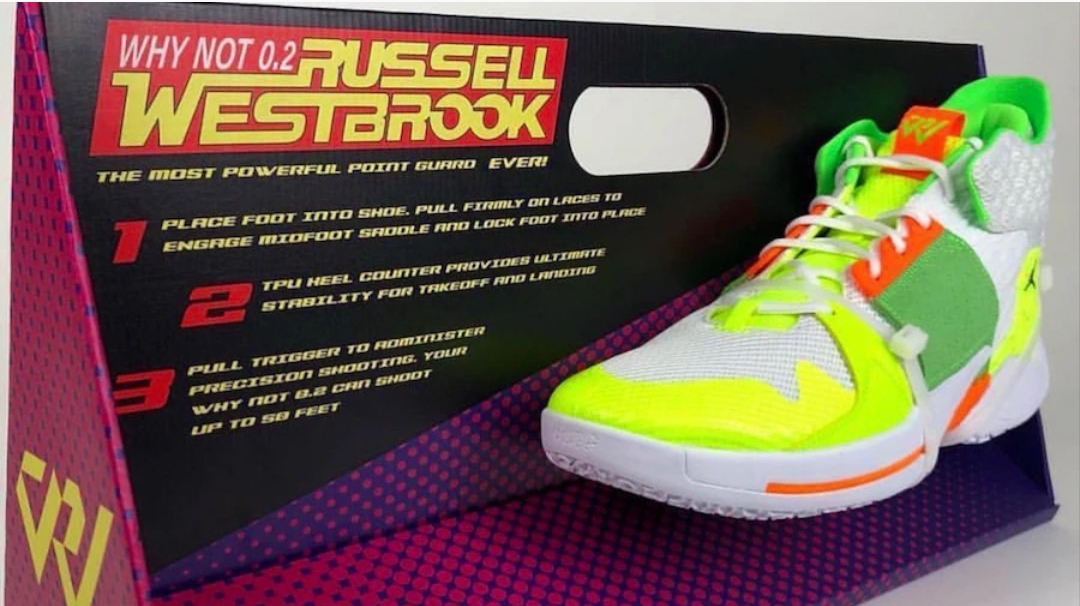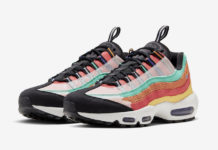At this point, I think we’ve all heard about the debacle that was the Adidas “Black History Month” Ultra Boost this year. That shoe was the text book definition of “tone deaf”. But while I have my thoughts about that particular sneaker–trust me, I will go in on them–I feel like I should preface everything I’m going to say by highlighting the age we live in.
We live in a time where everyone is outraged by everything. Where people go out of their way to be offended, as if they were in search of something to offend them. We live in an age of hyperbolic sensitivity, where people are quicker to find fault then to understand the point at hand, willfully reacting out of comfortable ignorance rather than inconveniencing themselves to digesting the thought using logic and reasoning.
A lot of this is due to the mob mentality of social media. It’s easier to blend in, and cooperate, with the group than to stand out and think on your own at the expense of the whims of said group. So, if social media determines that you should be publicly tarred and feathered, most people would rather participate, or at the very least, watch, rather than inject nuance, context, or objectivity. The role of devil’s advocate is no more. Even moreso, the role of race in America supersedes, and even underscores, that same notion.
I say all of that to drive home how much I’ve thought about this. I’ve considered the angles and points of views. I understand, in full, within context, all things involved on this subject. And yet, I come to this same conclusion: “To hell with ANY brand’s Black History Month collection, going forward, if they can’t be bothered enough to have our voices participate in the conversations of design and marketing. If they can’t think enough of us to have our ideas implemented in the process of story telling and design. If they can’t be considerate enough to have us in the room when the decisions are being made to produce these collections. How can they peddle a product, meant to pay homage to black culture, to black people without having people of color there involved in the process?!
Let me calm down.
Listen, I’m not so naive as to think that the brands, like Nike and Adidas, started producing Black History Month collections years ago because it was so near and dear to their hearts. At the end of the day, they’re corporations in the business of making a profit. BOTTOM LINE. However, I’m not so cynical as to think that paying tribute, and successfully selling a product, are mutually exclusive either. There is a space where paying homage and consumerism can coexist, albeit a place rarely traveled. It resides in the same realm where hype and substance coexist. (i.e. the “Thriller” album). The two paths can cross, but admittedly, the brands’ approach to it has been flagrantly half-assed or non-existent.


Take Nike for example. For 7 years they’ve produced the same tribal print/Kente cloth graphic on almost every Black History Month collection to date. While initially appreciated–because it IS a part of our culture and history–it isn’t ALL that amounts to our culture and history. WE are more than that. There are so many stories, and themes, to be shared and told. Nike is literally remixing the same song over and over again. But every year they think they’ve done something unique because they’ve added the lyrics (Kente cloth/tribal patterns) to a different beat (colorway). They’ve given us six years of “Ice, Ice Baby” to their 2012 sneaker version of “Under Pressure”. (Dammit, there was a DJ Khaled line I wanted to insert here. It alludes me).
Maybe it’s hard for some of you to understand. To have a brand like Nike have seven years to develop, and evolve, their “BHM” collection, but continually relegate it, and US, to just tribal graphics, Kente cloth, and/or Pan-African colorways, speaks volumes to how inept they are at telling OUR story. But this is how you know WE’RE not involved in the process. This is why representation matters. Black Culture has influenced everything from literature, to food, to music–among many other things–across the centuries, and across the world. So why does Nike’s “BHM” collection feel like it amounts to a three minute Google search haphazardly brought to life? It usually takes 24 to 18 months to develop a sneaker. So that means for seven years straight, Nike has had 24 to 18 months to deliver what equates to a home cooked meal. But instead, it feels like they annual opt to just order a pizza. BUT, if there was ever a “hold my beer” moment in Black History, it had to be the bullshit Adidas pulled out of it’s ass this year.

These clowns–and I say that with all sincerity–had the gall to deliver the most obtuse representation of Black Culture ever seen on a sneaker. The shoe was an all-white Ultra Boost. Now, while that alone isn’t enough to cause a total uproar, the ONLY indication that this was a tribute to Black History was the graphic–which was a basketball with the letters “CBC” (Celebrating Black Culture) over it–on the insole. The fucking INSOLE. The only part of the shoe that no one will ever see while wearing it. And then, to make matters worse, Adidas pulls the shoe, after receiving some well justified backlash on social media, and releases a statement saying that–and I’m paraphrasing–“after some thought, We’ve decided that it wasn’t a good idea to release this particular shoe.” Hmmm. Did you come to that decision on your own? Or did everyone getting in your ass persuade you to think better about your initial decision to release it?
They went on to say–and again, I’m paraphrasing–“the shoe was meant to pay homage to the Harlem Renaissance of the 1930s.” Ok… first off… fuck you Adidas. (And again, I mean that with ALL sincerity). You’ve already insulted my culture, don’t insult my intelligence too. You might as well have released an all red NMD Hu with M.A.G.A., stitched in white letters, going down the tongue and toe box, and attempted to explain it away by saying that it really stood for “Making AFRICA Great Again”. What part of that shoe pays tribute to the Harlem Renaissance?!!! How does a basketball on the insole say “paying homage to the explosion of African-American music, literature, and art in the 1920s”?!!! “Celebrating Black Culture” my ass.

That Adidas Ultra Boost seems more like a tribute fit for Jim Crow than a tribute towards anything, or anyone, in 1920’s Harlem. Adidas treated this year’s “BHM” collection more like an afterthought than a true celebration of Black Culture. It’s like they forgot February comes at the same time every year and hastily threw in a custom insole to an all-white Ultra Boost they had lying around. And the fact that this version of the Ultra Boost was “uncaged” didn’t go unnoticed. HOW CLEVER. (I really wonder if Adidas meant for that to be some type of Black History Easter egg of some sort). But I guarantee, had a person of color been involved, this version of that shoe would’ve never seen the light of day. Once again, this is why representation matters. If, for nothing else, it keeps you from making such obvious mistakes as the one Adidas made.
Having Black people, or any other person of color, who comes from that background, involved in the creation of such things as a Black History Month sneaker collection, gives you that authentic feedback that is necessary, and vital, to the execution of that process; from concept to design, to production and marketing.

Ironically enough, I believe Adidas was on to something with their “BHM” collection from a few years ago. One year they centered their collection around Olympic great Jesse Owens. The following year they centered it around tennis legend Arthur Ashe. Both collections were perfectly executed and it seemed that Adidas was going to focus their annual “BHM” collections on highlighting notable people of color. I thought it was brilliant because it expanded the concept of honoring Black History beyond Nike’s Kente cloth obsession. It seemed like Adidas wanted to take time and dig into the chapters of our story, whereas Nike just wanted to summarize it. But, for some reason, Adidas abandoned this idea. Why? I don’t know. But that’s one of many missed opportunities both brands have left on the table.

Case in point, Russell Westbrook’s recent Super Soaker Jordan Why Not Zero.2s. I wonder if anyone at Jordan Brand knew that African-American inventor, and NASA engineer, Lonnie Johnson created the Super Soaker. That would’ve been a cool concept that they could’ve incorporated into their Black History Month collection. Not a lot of people in the sneaker community know who Lonnie Johnson is, so that would’ve been an awesome story that Jordan Brand could’ve highlighted, thus giving Mr. Johnson the added recognition he deserves.

Mind you, celebrating Black History isn’t, and shouldn’t, be condensed to the month of February. Black History is being made on the daily basis. But for the sake of adding another argument to my diatribe, I truly believe that the brands who choose to release a Black History Month collection every year should begin to focus it on specific people in history. Or, noteworthy achievements and moments in Black History. Just like Adidas started to.

I know it seems like I’m belaboring the point, but this has been eating at me all week. Ever since my daughter was born I’ve been more conscious about our culture and how it gets passed down to her. How she learns about it in school. How she learns about it from me. Hoping that she feels pride, and empowered, by her past, ancestry, and her people. Hoping that both she and I add something positive to the story that is the Black experience; both here in this country and on this planet.
I know that it’s just “sneakers” for some, but like any other art form sneakers are simply the canvas that someone somewhere expresses their art. Just like painting. Just like music. It’s no different. If I, as a Black man, show no interest in our own story, and how it gets told, it then lends itself to being reduced and sanitized.
In closing, I fully expect for there to be people who vehemently disagree with me on this matter–particularly at the brands themselves–accusing me of exaggerating the issue and blowing this out of proportion. To them I say “As-salāmu alaykum, but I want all the smoke”, because I guarantee Black History wasn’t something you celebrated at home anyway.
#sneakerhead






